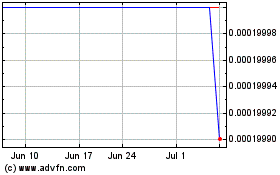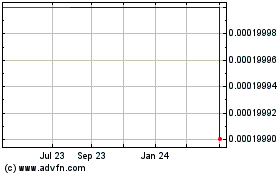Mutual Fund Summary Prospectus (497k)
April 12 2013 - 11:23AM
Edgar (US Regulatory)


Summary Prospectus
May 1, 2013
Class /
Ticker:
I-2 /
AIGOX
Alger Growth & Income Portfolio
Before you invest, you may want to review the Portfolio's prospectus, which contains more information about the Portfolio and its risks. You can find the Portfolio's prospectus and other information about the Portfolio online at
www.alger.com
. You can also get this information at no cost by calling 1(800)992-3863 or by sending an e-mail request to summaryprospectus@alger.com. The Portfolio's Prospectus and Statement of Additional Information, both dated May 1, 2013, are incorporated by reference to this Summary Prospectus, and may be obtained at no cost in the same manner as described above.
Investment Objective
Alger Growth & Income Portfolio seeks to provide capital appreciation and current income.
Fees and Expenses
This table describes the fees and expenses that you may pay if you buy and hold shares of the Portfolio. The table does not reflect fees, expenses, or charges that may be imposed by the separate accounts of life insurance companies or qualified pension or retirement plans. If it did, the fees would be higher.
|
Shareholder Fees
(fees paid directly from your investment)
|
|
|
None
|
|
|
|
Annual Fund Operating Expenses
(expenses that you pay each year as a percentage of the value of your investment)
|
|
|
Advisory Fees*
|
|
|
.585
|
%*
|
|
|
Distribution and/or Service (12b-1) Fees
|
|
|
None
|
|
|
|
Other Expenses
|
|
|
0.505
|
%
|
|
|
Total Annual Fund Operating Expenses
|
|
|
1.09
|
%
|
|
* The Portfolio and Fred Alger Management, Inc. have adopted breakpoints for Alger Growth & Income Portfolio. The management fee for assets in excess of $1 billion is .55%.
Example
The following example, which reflects the shareholder fees and operating expenses listed above, is intended to help you compare the cost of investing in the Portfolio with the cost of investing in other mutual funds. The example assumes that you invest $10,000 in Class I-2 shares of the Portfolio for the time periods indicated, that your investment has a 5% return each year and that the Portfolio's operating expenses remain the same. The example does not reflect fees, expenses, or charges that may be imposed by the separate accounts of life insurance companies or qualified pension or retirement plans. If it did, the expenses would be higher. Although your actual costs may be higher or lower, based on these assumptions you would pay the following expenses whether or not you redeemed your shares at the end of each period:
|
Class
|
|
1 Year
|
|
3 Years
|
|
5 Years
|
|
10 Years
|
|
|
I-2
|
|
$
|
111
|
|
|
$
|
347
|
|
|
$
|
601
|
|
|
$
|
1,329
|
|
|
Inspired by Change, Driven by Growth.


Portfolio Turnover
The Portfolio pays transaction costs, such as commissions, when it buys and sells securities (or "turns over" its portfolio). A higher portfolio turnover rate may indicate higher transaction costs. These costs, which are not reflected in annual fund operating expenses or in the example, affect the Portfolio's performance. During the most recent fiscal year, the Portfolio's turnover rate was 41.86% of the average value of its portfolio.
Principal Investment Strategy
Fred Alger Management, Inc. believes companies undergoing Positive Dynamic Change offer the best investment opportunities. Positive Dynamic Change refers to companies realizing High Unit Volume Growth or companies undergoing Positive Lifecycle Change. High Unit Volume Growth companies are traditional growth companies experiencing, for example, significantly growing demand or market dominance. Positive Lifecycle Change companies are, for example, companies benefitting from regulatory change, a new product introduction or management change.
The Portfolio invests primarily in equity securities such as common or preferred stocks which Fred Alger Management, Inc. believes offer opportunities for capital appreciation and which also pay dividends. In considering such companies, Fred Alger Management, Inc. classifies them into three categories: Dividend Leaders–companies that generate high dividend yields; Dividend Growers–companies that have a history of strong and consistent dividend growth; and Kings of Cash Flow–companies that have strong potential for generating capital appreciation and the ability to return significant amounts of cash to investors as a result of their free cash flow. It is a fundamental policy of the Portfolio to invest at least 65% of its total assets in dividend paying equity securities. The portfolio may invest up to 35% of its total assets in equity securities that do not pay dividends or in money market instruments and repurchase agreements. The Portfolio focuses on growing companies that, at the time of purchase of the securities, have a market capitalization equal to or greater than the market capitalization of companies included in the S&P 500 Index, as reported by the index as of the most recent quarter-end. The index is designed to track the performance of large capitalization stocks. At December 31, 2012, the market capitalization of the companies in this index ranged from $1.5 billion to $516.5 billion.
Principal Risks
As with any fund that invests in stocks, your investment will fluctuate in value, and the loss of your investment is a risk of investing. The Portfolio's price per share will fluctuate due to changes in the market prices of its investments. Also, the Portfolio's investments may not grow as fast as the rate of inflation and stocks tend to be more volatile than some other investments you could make, such as bonds. In addition, there are special risks associated with investing in preferred securities, including deferral and omission of distributions, subordination to bonds and other debt securities in a company's capital structure, limited liquidity, limited voting rights and special redemption rights. The market value of preferred stocks is generally more sensitive to changes in interest rates than the market value of common stocks.
Prices of growth stocks tend to be higher in relation to their companies' earnings and may be more sensitive to market, political and economic developments than other stocks, making their prices more volatile. An investment in the Portfolio may be better suited to investors who seek long-term capital growth and can tolerate fluctuations in their investment's value.
The following risks may also apply:
•
companies may cut or fail to declare dividends due to market downturns or other reasons.
•
there may be greater risk in investing in smaller, less seasoned companies rather than larger, more established companies due to such factors as inexperienced management and limited product lines or financial resources.
An investment in the Portfolio is not a deposit of a bank and is not insured or guaranteed by the Federal Deposit Insurance Corporation or any other government agency.
2

Performance
The following bar chart and the table beneath it provide some indication of the risks of investing in the Portfolio by showing changes in the Portfolio's performance from year to year and by showing how the Portfolio's average annual returns for the indicated periods compare with those of an appropriate benchmark of market performance. The S&P 500 Index is an index of large company common stocks considered to be representative of the U.S. stock market. The performance numbers do not reflect fees, expenses, or charges that may be imposed by the separate accounts of life insurance companies or qualified pension or retirement plans. If they did, the performance numbers would be lower. Remember that the Portfolio's past performance is not necessarily an indication of how it will perform in the future. Updated performance information is available on the Portfolio's website
www.alger.com
.

Best Quarter:
Q2 2009 17.08%
Worst Quarter:
Q4 2008 -24.53%
Average Annual Total Return as of December 31, 2012
|
|
|
1 YEAR
|
|
5 YEARS
|
|
10 YEARS
|
|
Since
Inception
|
|
|
Class I-2
(Inception 11/15/88)
|
|
|
12.34
|
%
|
|
|
1.45
|
%
|
|
|
6.48
|
%
|
|
|
8.21
|
%
|
|
S&P 500 Index
(reflects no deduction for fees, expenses or taxes)
|
|
|
16.00
|
%
|
|
|
1.66
|
%
|
|
|
7.10
|
%
|
|
|
9.55
|
%
|
|
3

Management
|
Investment Manager:
|
|
Fred Alger Management, Inc.
|
|
|
Portfolio Managers:
|
|
Dan C. Chung, CFA
Chief Executive Officer,
Chief Investment Officer and
Portfolio Manager
Since September 2003
|
|
Gregory S. Adams, CFA
Senior Vice President,
Director of Quantitative &
Risk Management and
Portfolio Manager
Since April 2012
|
|
|
|
Shareholder Information
Purchasing and Redeeming Shares
Because the Portfolio is an investment vehicle for variable annuity contracts and variable life insurance policies offered by the separate accounts of life insurance companies, as well as qualified pension or retirement plans, an individual cannot invest in the Portfolio directly, but may do so only through one of these sources. The Portfolio shares are held in the names of the separate accounts and plans. The minimum initial investment for the separate accounts and plans is generally $500,000.
Tax Information
The Portfolio's distributions may be taxable as ordinary income or capital gains. If you have invested through the separate account of a life insurance company or qualified pension or retirement plan, please consult the Prospectus or other information provided to you by your participating life insurance company or qualified pension or retirement plan regarding the federal income taxation of your policy or plan.
Payments to Broker-Dealers and Other Financial Intermediaries
If you purchase the Portfolio through a broker-dealer or other financial intermediary (such as a bank), the Portfolio and its related companies may pay the intermediary for the sale of Portfolio shares and related services. These payments may create a conflict of interest by influencing the broker-dealer or other intermediary and your salesperson to recommend the Portfolio over another investment.

Fred Alger & Company, Incorporated
•
360 Park Avenue South
•
New York, NY 10010
•
800.992.3863
•
www.alger.com


Drug Free Solutions (CE) (USOTC:DSOL)
Historical Stock Chart
From May 2024 to Jun 2024

Drug Free Solutions (CE) (USOTC:DSOL)
Historical Stock Chart
From Jun 2023 to Jun 2024
